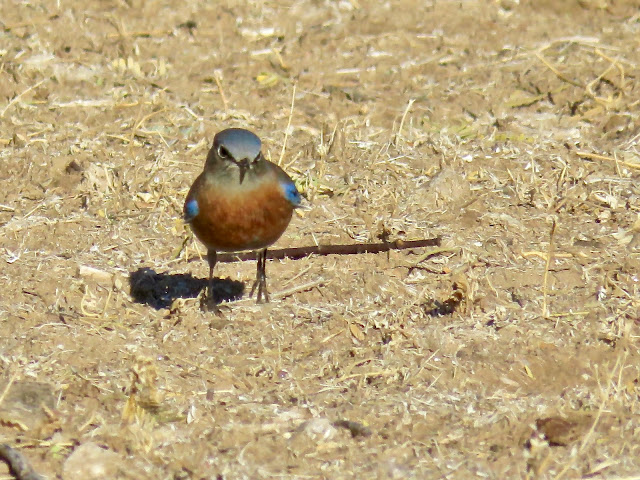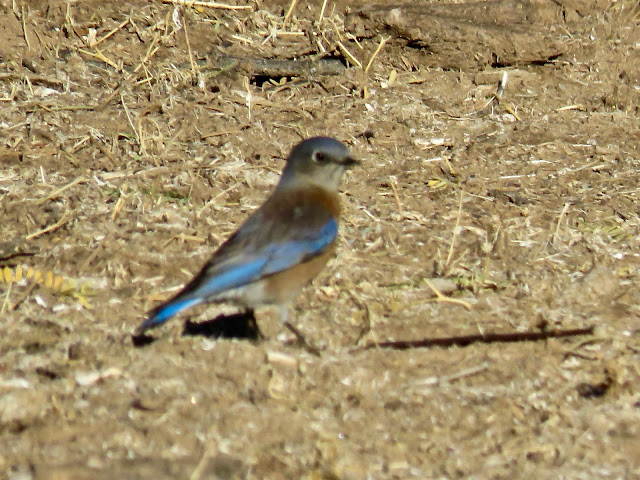Not one of my usual stops, I drove into the Goldfield Recreation Area this morning to see what birds might be lurking there. The sun was rising on the hillsides so it felt chlly to me at 46°F at 7:45 a.m.
Birds were quiet, but some were perched up on distant saguaro (HARRIS'S HAWK) and on bare limbs of tall cottonwoods closer to the river. LADDER-BACKED WOODPECKER was drilling into the limb and a solitary WESTERN BLUEBIRD was soaking up some sun.
For me, the main draw of the less-accessible Goldfield is lack of human traffic and always some surprising bird or two. In two hours of birding, I saw a total of four people.
Some birds were expected.
 |
| PHAINOPEPLA (male) |
 |
| PHAINOPEPLA (female) |
If you're ever in a mesquite bosque and see a lot of mistletoe clumps, looks for this bird. It's my understanding that it is one of the few birds than can digest mistletoe berries. Finding an open nest of PHAINOPEPLA is rare since nesting often occurs in or close to these dense clumps of mistletoe making a nest diffcult to find.
 |
| GREAT-TAILED GRACKLE |
Common Grackle is abundant east of the Rockies and is often called the "purple grackle" due to its sun-reflected radiance. Boat-tailed Grackle is a coastal bird and can be found along some inland waterways as well.
Depending on where you live, you're likely to come in contact with one of these grackles.
 |
| By camera, I was able to pull it in enough to identify it as a 4-year bird. |
 |
| Note the white remaining on its tail and wings. Not quite a fully mature BALD EAGLE, but much farther along than most three-year BAEAs I've seen. Actually, this if my first "four-year" Bald Eagle. |
As expected along the river, I found a KILLDEER.
 |
| KILLDEER |
Had better luck with the WESTERN BLUEBIRDS.
 |
| Foraging on the ground. When I came upon the flock, they lifted over my head and dropped down again. |
My visit to the Goldfield site had been all I wanted and more (also spotted a HAMMOND'S FLYCATCHER).
Until next time!
* * *
View this checklist online at http://ebird.org/ebird/view/checklist/S41848585



No comments:
Post a Comment